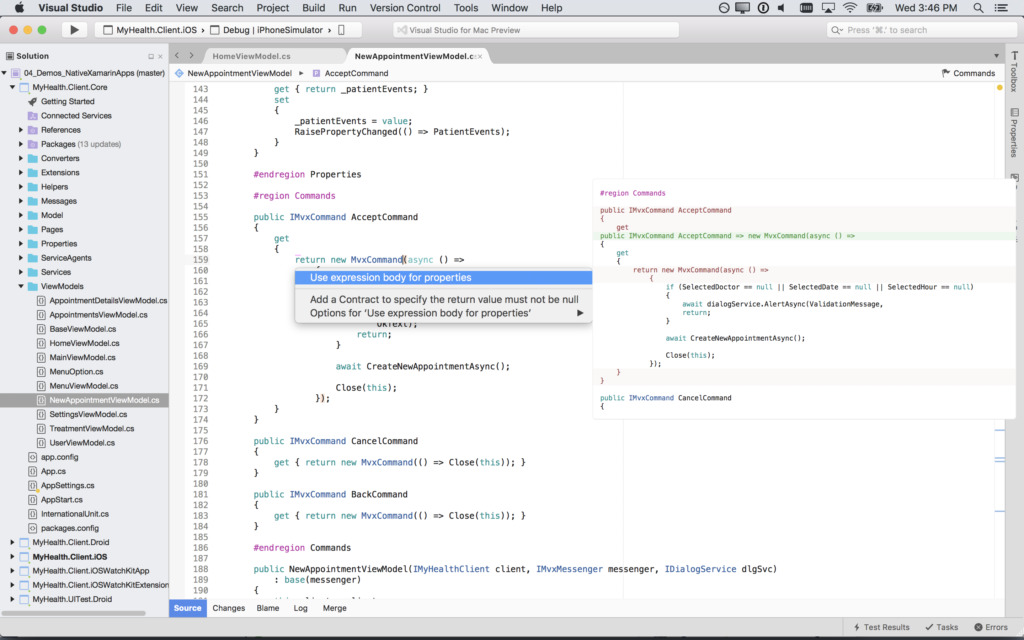Microsoft on Wednesday officially launched Visual Studio for Mac, bringing the development suite out of a months-long preview period.
The finished Studio release can be used to create apps for macOS, iOS, tvOS, watchOS and Android, as well as Web and cloud apps, Microsoft said. Some features include Git integration, an extension system, and multi-platform app templates.
The software's multi-platform capabilities stem from the use of .NET Core and Xamarin, and should take full advantage of platform-specific features. It can also be used develop games based on Unity, one of the most popular commercial game platforms.
Visual Studio was Windows-centric until November, when Microsoft issued the first Mac preview.
In recent years — under CEO Satya Nadella — the company has loosened its resistance to supporting non-Windows hardware, so long as it gets people using other Microsoft products. One of the first big motions in this direction was the debut of Office for iPad in 2014.
At the same time the company has pushed deeper into first-party hardware, for instance by premiering the Surface Laptop, Surface Studio, and HoloLens.
All of the core Visual Studio for Mac downloads are free, but professional use may require a paid subscription.
 Roger Fingas
Roger Fingas








 Christine McKee
Christine McKee
 Marko Zivkovic
Marko Zivkovic
 Mike Wuerthele
Mike Wuerthele

 Amber Neely
Amber Neely
 Sponsored Content
Sponsored Content
 Wesley Hilliard
Wesley Hilliard










30 Comments
Okay, how do you manage iOS signing identities and provisioning profiles or use the Simulator?
It is just Xamarin Studio rebranded and have nothing to do with the Windows version of Visual Studio. Xamarin Studio have been available on Mac for years.
Do Microsoft actually release anything new other than rebranded products? Just look at their enterprise "xxx for Business" offerings.
Yeah, but does it support Swift?
So, is this for building Windows apps with a Mac as the development tool? Or is it for building macOS apps using Microsoft's development tools? Or apps for iOS?
Sounds great to me. I'm an enterprise dev and most of my work is C# in VS.NET. The .NET Core subset has been steadily growing with more platform-agnostic libraries and APIs, which is great. Especially if you're building your functionality around services for consumption by other client apps who can be using whatever.
I haven't tried this yet, but I'd be pretty surprised if they don't support Swift. Tho if doing something native to iOS I'd likely still prefer to go w/ Xcode just to remove added layers.